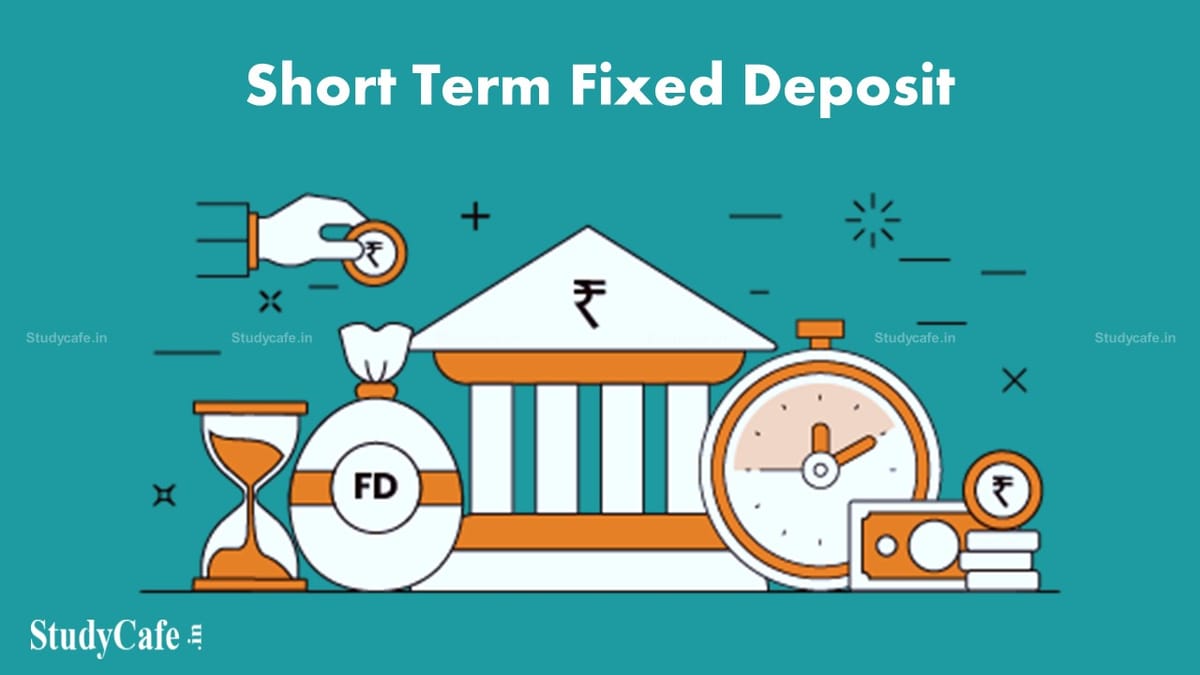Deepshikha | Mar 1, 2022 |

Everything You Need to Know About Short Term Fixed Deposit
For people in India, a fixed deposit is one of the most traditional kinds of investment. It encourages people to save money and provides them with a guaranteed return in the form of interest. Individuals can choose from several various sorts of fixed deposit arrangements. This page discusses short-term fds in detail, including their characteristics, benefits, and other short-term investing possibilities.
A short-term fixed deposit is a financial product offered by banks and non-bank financial institutions (Non-Banking Financial Companies). They encourage customers to put money in a savings account and earn a fixed rate of interest. The advantage of putting money in a fixed deposit over a savings account is that you will earn a higher interest rate. The fixed deposit can last anything from seven days to ten years. A short term fixed deposit, on the other hand, has a maturity period ranging from 7 days to 12 months. Interest rates on short-term fixed deposits differ from bank to bank and are subject to change at any time.
Investors can cancel their FD investing plans at any time. Most banks and financial organizations, on the other hand, impose a penalty for doing so. And different banks have different rules regarding premature withdrawal. Investors can also take out a loan against a fixed deposit account. This will allow them to meet their liquidity needs while continuing to invest in FDs. Banks provide loans such as home loans, personal loans, and property loans secured by a fixed deposit.
The features of a short-term FD are as follows:
The period of a short-term fixed deposit might range from seven days to less than a year.
When a fixed deposit account matures, one can choose to renew it. In addition, most banks provide auto-renewal options.
Varying banks may have different minimum deposit amounts for FD accounts. The minimum deposit amount is usually Rs. 10,000 for most banks.
A short term FD pays a lower interest rate than other fixed deposit schemes such as post office FDs, time deposits, and so on. The higher the interest rate, the longer the investment horizon.
A fixed deposit account’s interest is taxed. Individual income tax slab rates determine the tax rate.
The majority of banks enable depositors to make early withdrawals from their FD accounts. However, if you withdraw before the maturity date, the bank will charge you a penalty. The penalty may differ from one bank to the next.
Depositors have the option of naming beneficiaries for their funds.
The following are some of the advantages of putting money into a short-term deposit:
Because it has a fixed interest rate, a short term FD is a safe investment option. Other fixed deposit kinds are designed for short-term investing. These choices also assist in the short-term accumulation of funds through the use of consistent interest rates. Other short-term investing choices include the following:
A recurring deposit is a type of savings account where consumers can save small sums of money every month for a certain length of time and earn interest. The lump money and interest are returned when the recurring deposit matures. It is one of the most popular short- and long-term investment strategies. Recurring deposits have terms ranging from three months to five years. Premature withdrawals are usually not permitted for recurrent deposits. To obtain the money, one must wait until the maturity date has passed or close the account prematurely.
Recurring fixed deposit interest rates can range from 3.5% to 8.5%. Senior citizens’ RD accounts pay a little greater rate of interest than standard RD accounts. For senior persons, most banks give an additional rate of 0.25% to 0.75%.
Sweep-in fixed deposits enable investors to transfer funds from their savings bank account to their FD account. As a result, they will be able to make bigger returns. Sweep-in fixed deposits can last anywhere from one to five years, depending on the bank. Furthermore, investors will be able to earn larger returns on their excess funds as a result of this. Furthermore, investors can withdraw funds from their FD without incurring any fees or penalties to meet their short-term needs.
The interest rate on the sweep in FD will be similar to that of any other fixed deposit and will be determined by the period of the FD.
The oldest and most popular type of investing is a post office fixed deposit or term deposit. It is a safe investment because the Indian government backs it. Post offices offer this system, which comes in four different tenures: 1, 2, 3, and 5 years. For a short-term investment, a one-year tenure is an option. The higher the interest rate provided, the longer the investment term.
A minimum deposit of Rs.200 is required, with subsequent deposits in multiples of INR 200. Post office FDs have higher interest rates than bank FDs on occasion.
In case of any Doubt regarding Membership you can mail us at contact@studycafe.in
Join Studycafe's WhatsApp Group or Telegram Channel for Latest Updates on Government Job, Sarkari Naukri, Private Jobs, Income Tax, GST, Companies Act, Judgements and CA, CS, ICWA, and MUCH MORE!"